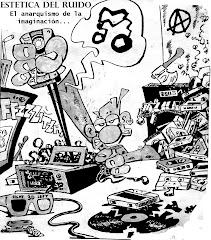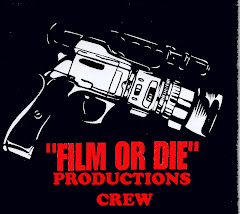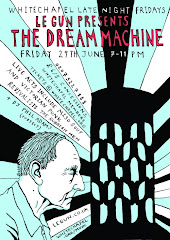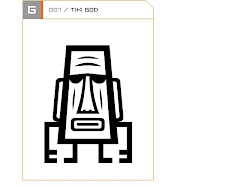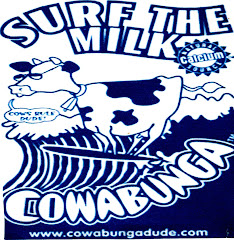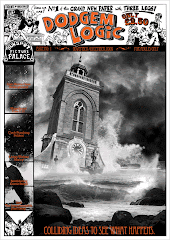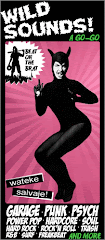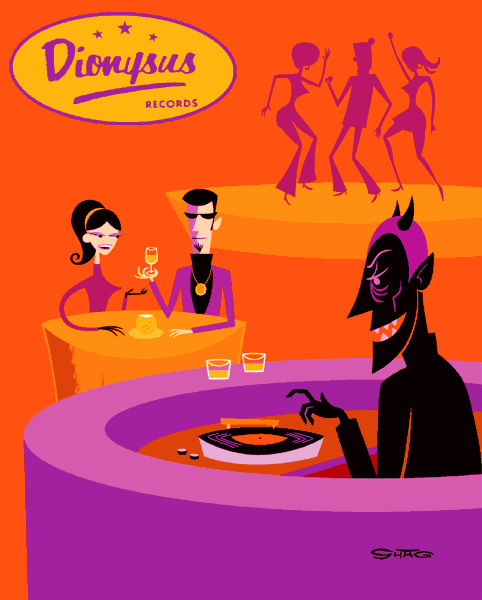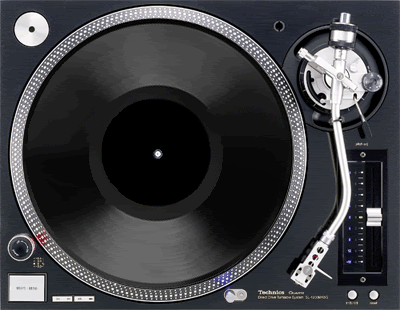
Music's phrasemakers (clockwise from top left): Brian Eno, Bikini Kill, William S Burroughs and Ornette Coleman. Photograph: Redferns/Corbis
Michaelangelo Matos
Music comes from everywhere, and so do the names we call it by. There's a longstanding cliche that only the music business needs genre names – everyone else either likes it or they don't. That is, of course, bunk, as anyone who's heard enough people trot out lines such as "I like all music except for rap and country" is aware. Not least because quite a lot of those genre names come from the artists themselves.
Gospel, for example, was more or less invented by Rev Thomas A Dorsey. As Georgia Tom, Dorsey played jazz and blues piano before turning to the Bible for inspiration in 1932 and selling songs such as Precious Lord, Take My Hand to churches in Chicago, then across America. His group's name was the University Gospel Singers. Similarly, bluegrass originates from the name of the country singer-mandolinist Bill Monroe's backing band from 1938 to his 1996 death: the Blue Grass Boys. They were named after Monroe's native Kentucky, "the Blue Grass State". Glitter rock – a synonym for glam – comes from Gary Glitter, about which the less said, the better.
More often, a genre name will come from a musician's works. Free jazz comes from Ornette Coleman's 1960 album of the same name; ditto blue-eyed soul, from the Righteous Brothers' 1963 LP. The mid-60s Jamaican boogie dubbed rocksteady is named for an 1966 Alton Ellis single, while reggae followed it into Jamaican dancehalls on the heels of the Maytals' Do the Reggay in 1968. Soca is a condensation of Trinidadian artist Lord Shorty's Soul of Calypso, from 1974, while acid house, originally from Phuture's 1987 single Acid Tracks, has come to mean anything with a yammering, squealing TB-303 on it.
Ambient, of course, comes from Brian Eno's Ambient 1: Music for Airports (1978). Eno says in his famous liner notes from 1975's Discreet Music that the idea had come to him while recuperating in hospital after getting hit by a car in January 1975; a guest put 18th-century harp music on at low volume, then left the immobile Eno to ponder its placement. The guest remembers it differently: in Geeta Dayal's Another Green World, Eno's then-girlfriend Judy Nylon says she put the harp music on intending to balance it with the pouring rain outside, and that Eno caught on immediately.
Sometimes lyrics become genres. Doo-wop comes from any number of primordial R&B harmony vocal-group records – the two most obvious are the Turbans' 1955 When You Dance ("Doo-wop, de-doo-doo," runs the end of the refrain) and the Five Satins' In the Still of the Nite a year later (under the sax solo, the chant "Doo-bop, doo-bah!"). In the late '60s, New York oldies radio DJ Gus Gossert put it into wide use, though he claimed he got it from California aficionados.
Old-school Bronx DJ Lovebug Starski claims to have coined the term hip-hop by rhyming "hip-hop, hippy to the hippy hop-bop" at early parties, telling Peter S Scholtes in 2006: "Me and Kid Cowboy from [Grandmaster Flash's] the Furious Five used to say it together. I'd say the 'hip', he'd say the 'hop'."
The term jungle came from a soundsystem yard tape from Jamaica that featured the chant "Alla the junglists". MC Navigator of pirate station Kool FM told critic Simon Reynolds in his book Energy Flash: "There's a place in Kingston called Tivoli Gardens, and the people call it the Jungle." When Rebel MC sampled it, breakbeat-led house had a new name. Reynolds points out that the British rave label Ibiza had "the first use of the word 'jungle' on their [12-inch] sleeves", including 1991's Noise Factory single, Jungle Techno.
Sometimes record labels become genre names, as with industrial, named after Throbbing Gristle's imprint, established in 1976, and lovers rock, industrial's polar opposite: sentimental, romantic reggae named for the London label of Dennis and Eve Harris from around the same time. And sometimes record labels just mandate new terms. Outlaw country, no wave and techno all came into use via compilation albums: respectively, 1976's Wanted! The Outlaws (featuring Willie Nelson, Waylon Jennings, Jessi Colter, and Tompall Glaser); 1978's No New York (Teenage Jesus & the Jerks, Contortions, Mars and DNA); 1988's Techno! The New Dance Sound of Detroit (Juan Atkins, Derrick May, and Kevin Saunderson).
There are occasions, too, when an artist just says something is something, and that is that. Think of Afrobeat – not be confused with Afropop, an old catch-all to describe, well, all pop from Africa. Afrobeat was the name coined in 1968 by Fela Kuti to describe the music he was inventing around that time, made up of funk, jazz, Nigerian highlife, anti-authoritarian lyrics and high-grade weed.
The 90s were rife with musician-coined genres. Riot grrrl was the name of a 1991 fanzine put together by four of that music's key players: Allison Wolfe and Molly Neuman of Bratmobile; Kathleen Hanna and Tobi Vail of Bikini Kill. Illbient was coined in 1994 by DJ Olive, of the trio We, to describe a multimedia presentation to a journalist in Brooklyn. "Some older man who said he was a journalist asked me if this was ambient music," Olive says, "and I blurted out as a joke, 'Nope, this is illbient.' We all had a laugh about it." And in 1996, producers Ed Rush and Trace of the No U Turn label minted the phrase techstep to describe their blaring, dense, hard-as-hell style of drum and bass.
But sometimes an artist assigns a title that becomes something else. Power-pop was coined by Pete Townshend in 1967 to define the Who, but wound up being what Eric Carmen of prime power-pop practitioners the Raspberries described as "groups that came out in the 70s that played kind of melodic songs with crunchy guitars and some wild drumming". Not to mention the endless acolytes who mimicked them.
Often, technology drives musical changes, so equipment plays its role, too. Acid, noted above, is one example. So is dub, short for the "dubplate" (duplicate platter) Jamaican sound system operator Ruddy Redwood ordered in late 1967 from Duke Reid's pressing plant. The recording was On the Beach by the Paragons, and the engineer, Byron Smith, accidentally wiped the vocal. Reid played it alongside the vocal version; the response was so strong he began putting instrumentals on the B-sides. Eventually, creative engineers such as King Tubby and Lee Perry would take the dub side into whole new areas of bass-heavy abstraction.
Of course, journalists need these terms more than anyone, in a sense – a recognisable genre name is powerful shorthand. As the longtime bible of the American music industry, thanks to its trendsetting album and single charts, Billboard has played a significant role in disseminating musical titles. Easy listening, for instance, was coined in the 17 July 1961 edition (not, sadly, included on the magazine's Google Books archive, though every other 1961 issue is). Rhythm & blues came to be in 1947, when Jerry Wexler, then a Billboard editor, began using it to denote the kind of postwar black pop that he went on to pioneer with Atlantic Records. Rhythm & blues became a chart name in the 25 June 1949 issue, replacing the previous issue's "Race Records".
Long before producing The Chris Rock Show and Good Hair, Nelson George was himself a Billboard reporter (he was behind the magazine's use of the term "black music"). But it was in the Village Voice that George came up with retro-nuevo, while reviewing Anita Baker in 1986. The term meant 80s black pop with roots in pre-disco R&B. "Black pop music had always felt grounded in a very adult perspective on life and love," George says. "The music became a lot more juvenile in the 80s. To me, 'retro-nuevo' was a way to highlight singers who were very contemporary but hadn't totally abandoned tradition."
George's longtime Voice editor was Robert Christgau, who made his own coinage with skronk, a phrase synonymous with no wave that Christgau first used in 1978. "It was a complete piece of onomatopoeia," Christgau says. "It just popped into my head. I was looking for a way to describe DNA and Mars. That's what the guitars sounded like to me."
Heavy metal was also first used to describe ugly guitars. The phrase, of course, originated with William S Burroughs in his 1962 novel The Soft Machine, featuring Uranian Willy, the Heavy Metal Kid. Then John Kay of Steppenwolf sang the phrase "heavy metal thunder" in 1968's Born to Be Wild. But it first reached print as a synonym for hard rock via Mike Saunders (later Metal Mike Saunders, singer for early-80s punks the Angry Samoans), in a review of Humble Pie's As Safe As Yesterday in Rolling Stone from 1970, describing the album as "more of the same 27th-rate heavy metal crap".
The same year, punk rock was coined Stone's Detroit rival, Creem, via Dave Marsh, who used it in a ? & the Mysterians live review ("Needless to say, it was impossible to pass up such a landmark explosion of punk rock, even after two nights running of Tina Turner"). Punk magazine came along a few years later.
Britain does nomenclature like no one else. Krautrock came from NME's Ian MacDonald in 1972, to describe Neu! and Can and the like; a year later, Faust led their album IV with the 12-minute epic Krautrock. Similarly, Simon Reynolds began using post-rock in early 1994 (he says he used it in Melody Maker, and the May 1994 issue of The Wire has his essay on it) to denote bands using rock instruments to non-rock ends. "I didn't actually coin it," says Reynolds, citing Richard Meltzer and Paul Morley's use of it before him as "an avant-rock synonym". He explains: "I made it into a concept."
Also in 1994, Andy Pemberton coined trip-hop in the June 1994 edition of Mixmag to describe the head-nodding instrumentals of DJ Shadow and the early Chemical Brothers. Similarly, dubstep first entered print in 2002, in sometime Guardian writer Dave Stelfox's XLR8R magazine feature on UK garage producers Horsepower Productions. According to the journalist Martin Clark, the term originally stems from a "tight circle" and originates either with UK promoter Ammunition or DJ Hatcha, whose Dubstep Allstars Vol 1 came out in June 2003.
As that indicates, the music business needs to know what it's selling and who it's selling to. Hillbilly music, a term that predates country music, was the coinage of Ralph Peer, who in 1925 recorded a North Carolina group he named the Hillbillies. When Peer recorded Jimmie Rodgers and the Carter Family two years later, the name stuck to the sound. Sire label boss Seymour Stein famously came up with new wave to sell punk to US audiences who were afraid of punk's violent connotations. In 1995, Motown executive Kedar Massenburg, who signed D'Angelo and Erykah Badu, came up with neo-soul as a way to sell them. (It definitively supplanted Nelson George's retro-nuevo.)
Then there is advertising. Bossa nova – Portuguese for "new wave" – gained currency, according to Brazilian music historian Ruy Castro, when it appeared in an advert for a 1958 multi-artist concert put on by Grupo Universitário Hebraico do Brasil. World music was hashed out in 1987 at an industry meeting. It was intended only for a brief marketing campaign to pump non-Anglophone musicians in retail spaces they might not otherwise fit into, only to remain an acknowledged, if unwieldy, category. Radio formats sometimes impose themselves on the music. AOR is a US abbreviation for "album-oriented radio" (later "rock") coined in 1972 by Lee Abrams and Kent Burkhart's consultancy firm for the FM rock radio stations that would define ultra-slick middle-American rock: Styx, Boston, Aerosmith. In practise, it usually translates to "definitively pre-punk".
And of course, radio plays a big role in the history of the term rock'n'roll itself – though it had been used in blues records dating back to 1922 (Trixie Smith's My Man Rocks Me with a Steady Roll, for example) and, as Preston Lauterbach's superb new book The Chitlin' Circuit makes clear, was basically everyday talk in postwar R&B: Roy Brown's 1947 Good Rockin' Tonight (later cut by Wynonie Harris and, on his second single, Elvis Presley); Wild Bill Moore's We're Gonna Rock, We're Gonna Roll (1947); the Dominoes' Sixty Minute Man (1950) ("I'll rock 'em, roll 'em all night long"). Then in 1952, Cleveland DJ Alan Freed switched his radio show's name from Record Rendezvous to The Moondog Rock'n'Roll House Party. We'll leave it there.
Via
http://www.guardian.co.uk/music/2011/aug/25/origins-of-music-genres-hip-hop


























































